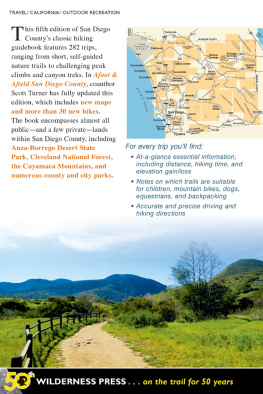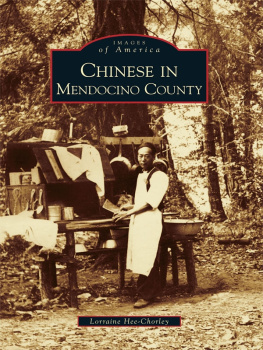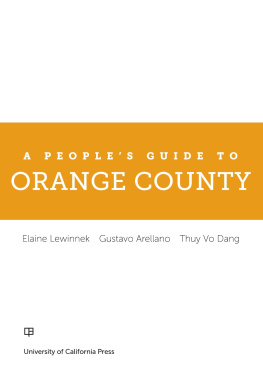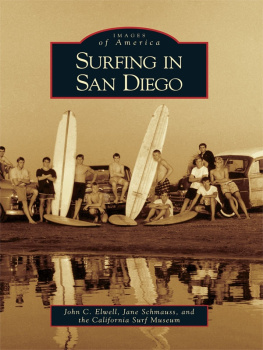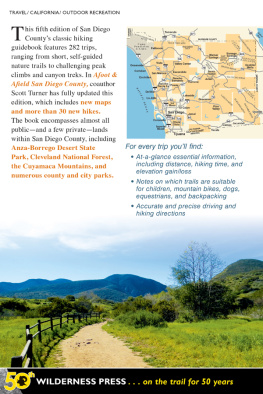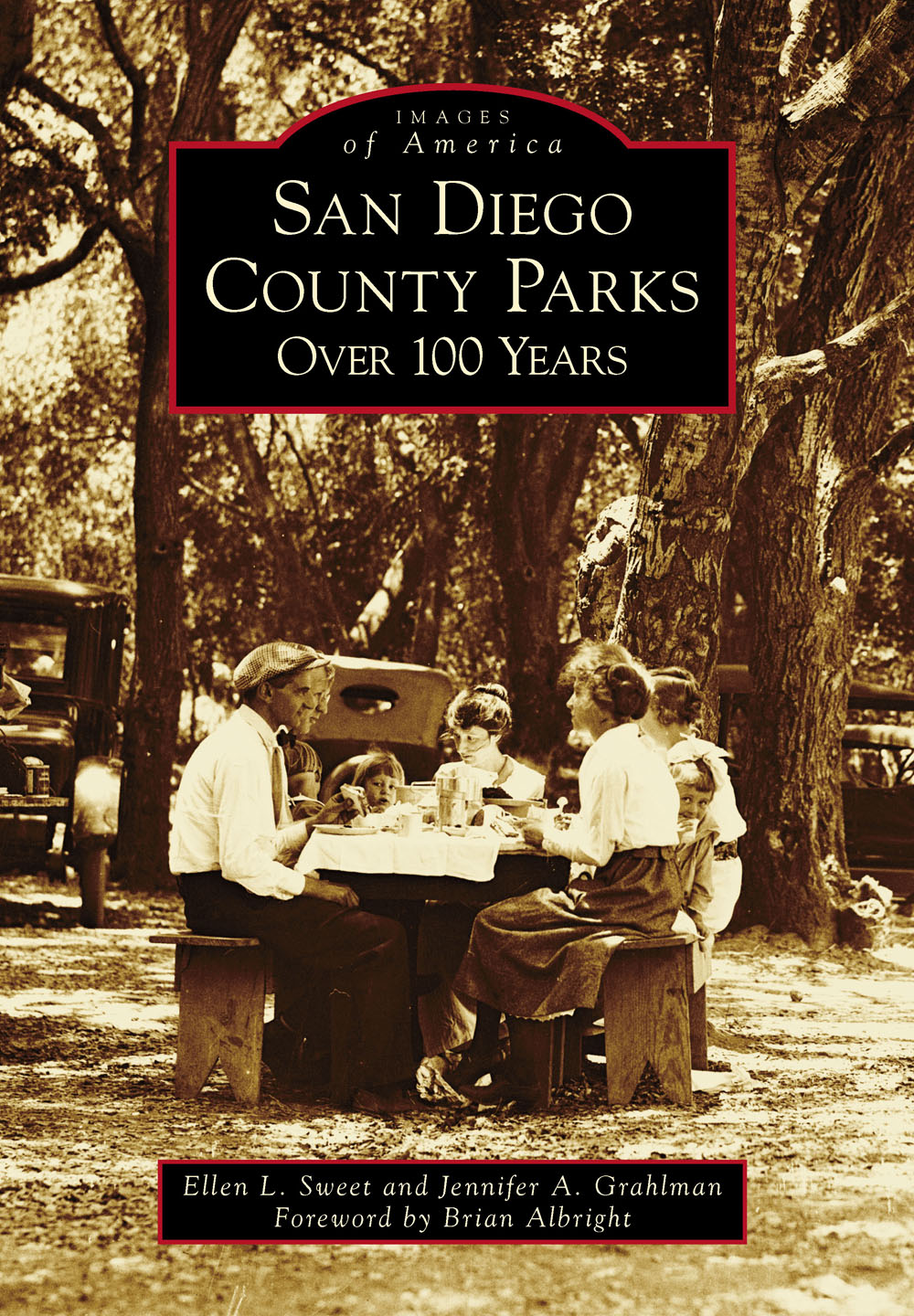
IMAGES
of America
SAN DIEGO
COUNTY PARKS
OVER 100 YEARS

The County of San Diego Department of Parks and Recreation followed in the footsteps of iconic park systems, including Golden Gate National Parks, by creating striking logos for its parks, preserves, community centers, and historic sites. A branding campaign with the first logos launched in 2015. (Courtesy of the County of San Diego Department of Parks and Recreation History Center.)
ON THE COVER: Picnics (called pic-nics by early residents), such as this expedition to Flinn Springs around 1915, have long been a San Diego tradition. Once a private resort, Flinn Springs County Park remains a popular spot for family gatherings and special events in the backcountry. (Courtesy of the San Diego History Center.)
IMAGES
of America
SAN DIEGO
COUNTY PARKS
OVER 100 YEARS
Ellen L. Sweet and Jennifer A. Grahlman
Foreword by Brian Albright

Copyright 2017 by Ellen L. Sweet and Jennifer A. Grahlman
ISBN 978-1-4671-2599-4
Ebook ISBN 9781439661949
Published by Arcadia Publishing
Charleston, South Carolina
Library of Congress Control Number: 2017936376
For all general information, please contact Arcadia Publishing:
Telephone 843-853-2070
Fax 843-853-0044
E-mail
For customer service and orders:
Toll-Free 1-888-313-2665
Visit us on the Internet at www.arcadiapublishing.com
This book is dedicated to parkgoers, park caretakers, and future generations of park stewards.
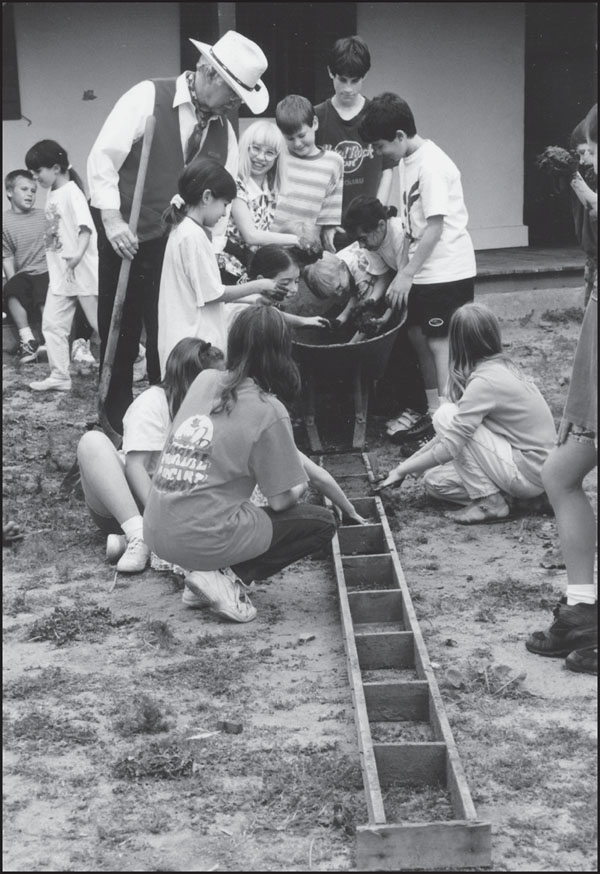
The County of San Diego Parks and Recreation Department offers special programs for individuals and families throughout the county. Here, children learn about adobe brick making at Rancho Guajome with the help of a volunteer docent. (Courtesy of the County of San Diego Department of Parks and Recreation History Center.)
ACKNOWLEDGMENTS
The authors thank the County of San Diego Department of Parks and Recreation, especially Director Brian Albright, for sponsoring and contributing to this publication.
Photographs used in this book, unless otherwise noted, are from the County of San Diego Department of Parks and Recreation History Center. Many other photographs used in this book are from the extensive collections of the San Diego History Center (SDHC), and we appreciate the help of their professionals Chris Travers, Carol Myers, Natalie Fiocre, and Jane Kenealy. Other institutions and individuals also provided photographs, including Alice Funk of the Ramona Pioneer Historical Society (RPHS); Richard Crawford, Special Collections, San Diego Public Library (SDPL); Helix Water District (HWD); Grand Rapids Public Library (GR); David Lewis, Julian Historical Society (Julian); Richard Bumann (RB); Donna Shelton (DS); Linda Ralphs Kaeser (LRK); Steven Apple (SA); Paul Nestor (PN); William Woolman (WW); and Susan Baker Guthrie (Baker). We thank Michelle Peralta of the Escondido Public Library Pioneer Room, Richard Moore of the Solana Beach Civic and Historical Society, and Jack Larrimer of the Vista Historical Society for searching their collections for photographs. Christopher Wrays extensive knowledge of the San Diego Flume was very helpful.
Rangers, office staff, and retired members of San Diego County Parks and Recreation assisted and supported us. We are extremely grateful to Jacob Enriquez and Cailn Hunsaker for their guidance and love of history. Cheryl Wegner, Mary Niez, John DeWitt, Susan Hector, Maureen Abare-Laudy, Paul Kucharczyk, Melvin Sweet, and Gloria Hinkley provided information and assistance. Vincent Freeman produced the current county map. We thank the board of the San Diego County Parks Society for their encouragement.
Lastly, we are indebted to the two historians, the late Mary F. Ward and Dr. Lynne (Christenson) Newell, whose research and files have done so much to preserve our departments history.
FOREWORD
At the far southern end of California, along the shared, sunny border with Mexico, lies San Diego County. A pastoral region of ranches and small towns for most of the 1800s, the county would eventually boast one of the largest and most diverse parks and recreation departments in the nation. Spurred by the efforts of philanthropic citizens, the County of San Diego Department of Parks and Recreation began as the 20th century unfolded. In towns such as Ramona, Lakeside, and Spring Valley, San Diego Countys first parks were community cornerstones. Soon afterward, picturesque groves, vales, and desert refuges where citizens had gathered to picnic for decades also became county parks. Beach-access land was acquired by the County of San Diego, and lifeguards were charged with protecting the public. To meet the needs of a growing postwar population, San Diego County built large regional parks and campgrounds, where both longtime and new San Diego families could recreate and enjoy the countys natural offerings. Preserving these sensitive waterways, beautiful vistas, and remarkable biodiversityas well as the regions historical characterremained key as San Diego County blossomed into a thriving region of major cities and planned communities. Today, San Diego County Parks and Recreation serves more than 40 communities with its over-50,000-acre system of 125 sites including local parks, sports complexes, nature centers, ecological preserves, historic parks, trails, fishing lakes, botanical gardens, community and recreation centers, skate parks, and open-space preserves. A pride of the region, San Diego County Parks and Recreation demonstrates that nothing quite reflects the essence of its citizens like a communitys parks. The photographs included in this book show not only San Diegans truly enjoying county parks, but also the steadfast efforts of a department committed to enhancing life in San Diego County. I am pleased to introduce this book on the history of some of our beloved parks.
Brian Albright
Director
County of San Diego Department of Parks and Recreation
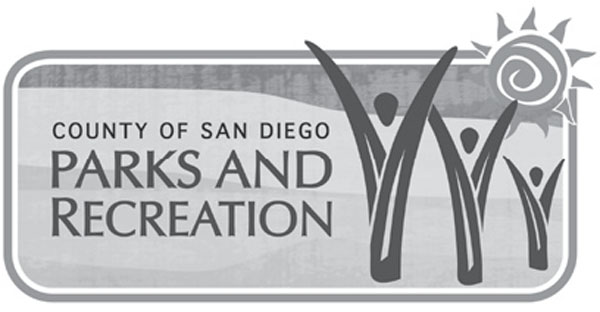
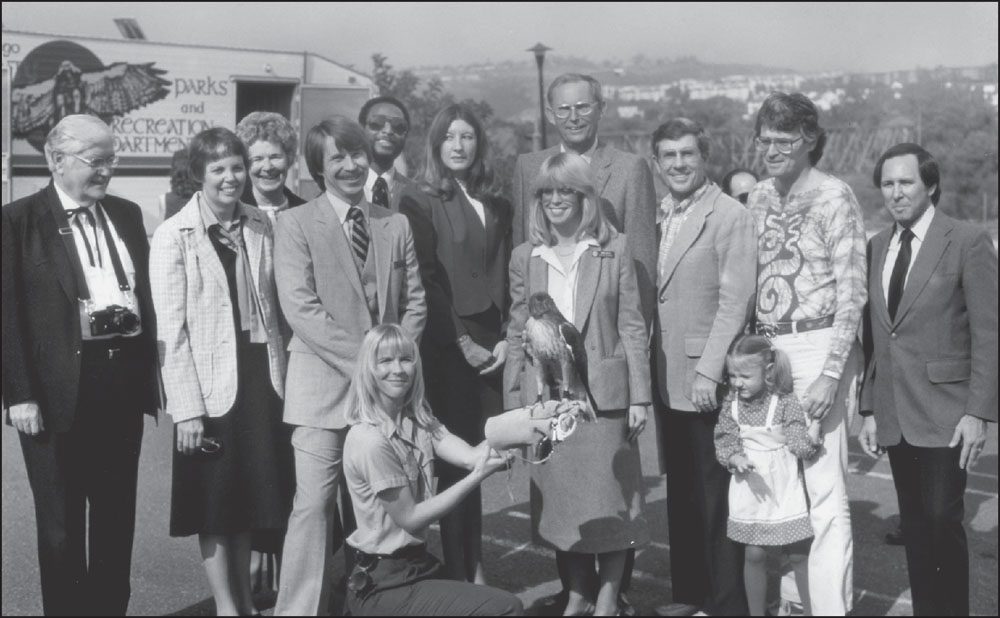
The County of San Diego Department of Parks and Recreation works with communities on beautification projects, cleanups, and environmental education, as these two photographs illustrate. In the photograph above, from the early 1980s, the San Diego County Parks Society, a nonprofit civic group, partners with the department to support community outreach using an Ecovan. Fourth from left is Director Robert Copper, along with society members, staff, and ranger Lauren Hall-Cather with a red-tailed hawk. On March 8, 2014 (seen below), when Director Brian Albright (sixth from left) and County Supervisor Greg Cox (center) opened an observation deck at Hollister Pond in Otay Mesa, they concluded the efforts of multiple groups, namely the County of San Diego, the Cities of San Diego and Chula Vista, the California Conservation Corps (grouped at right), and citizen advisors.
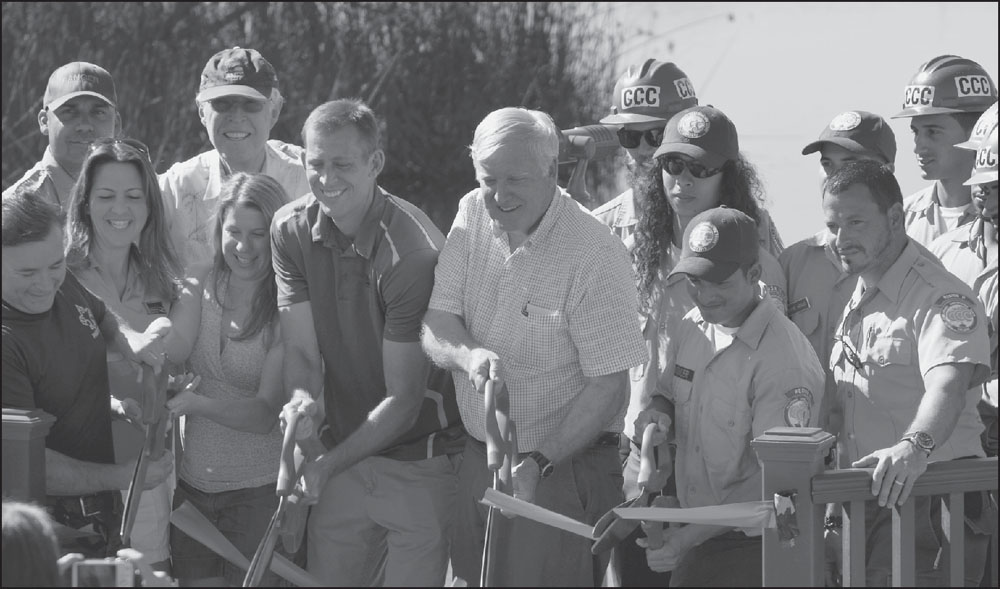
Next page

